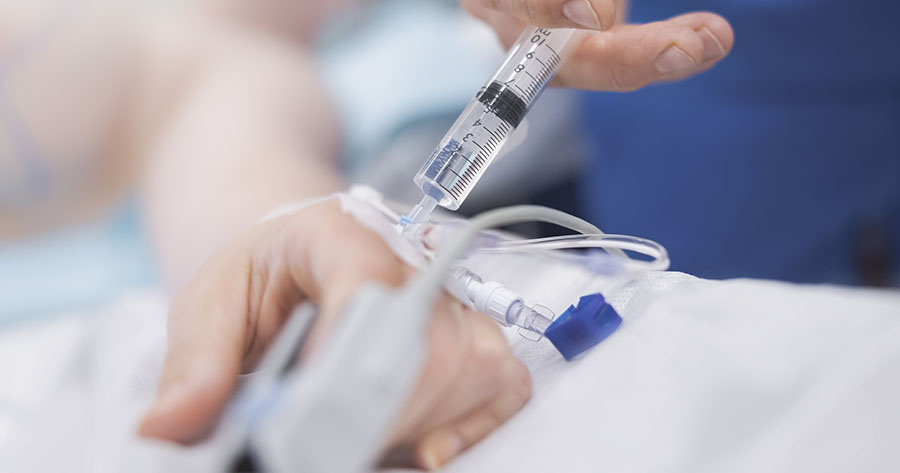Many people with type 2 diabetes are overweight or obese, and after starting insulin further weight gain is a major issue, as it is associated with an increase in cardiovascular risk (Carver, 2006; Ryan et al, 2006). The morbidity associated with obesity and diabetes is well documented (Schernthaner, 1996; Almdal et al, 2004).
What is Fife-DICE?
Fife-DICE (Diabetes Insulin Conversion Education) is a group education programme which began in 2006 that aims to enhance the care given to people with type 2 diabetes who are referred to start insulin therapy. Prior to Fife-DICE, dietetic support for these people was limited as no dietetic resource had been established.
The diabetes National Service Framework (Department of Health [DH], 2001) has made recommendations for structured group education, and there is growing evidence to support this (NICE, 2003; Diabetes UK, 2004; Deakin et al, 2005; DH, 2005); however, no evidence currently exists regarding group education models for people with established type 2 diabetes requiring insulin initiation.
This was identified as a high priority for development at the authors’ diabetes centre in the diabetes service review, which recommends providing a variety of options to achieve person-centred, coordinated care, with ongoing advice and education, empowering people to effectively self-manage their diabetes and achieve optimal glycaemic control.
This article describes the Fife-DICE programme, outlining how people with type 2 diabetes are assessed and invited to attend the education programme facilitated by a DSN and a dietitian over a period of 7 months.
The education programme was developed to advise people with type 2 diabetes who were converted to insulin therapy on how to minimise weight gain and achieve optimal glycaemic control. Evaluation and results of the programme are presented.
Aims
To evaluate the effect of Fife-DICE on body weight and glycaemic control in people with type 2 diabetes who had been initiated on insulin therapy.
Method
People with type 2 diabetes with HbA1c levels greater than 7.5% on maximum oral therapy are referred from secondary care to an insulin assessment clinic run by a DSN and dietitian. At the clinic, people are assessed individually by the DSN and dietitian, followed by a case discussion between the dietitian and the DSN to establish whether these individuals have potential adjustments they can make to their lifestyle, or if they are suitable for, and want to attend the, group programme.
Insulin initiation may be deferred in a few people as there are significant improvements that can be made to their diet, or alternatively such dietary and lifestyle changes may have already been made, with significant reductions in blood glucose levels. People requiring insulin initiation return the following week for an individual appointment with the DSN to commence their insulin therapy. Occasionally some people may commence insulin treatment as an inpatient, or on a more urgent basis and are referred directly into the group education sessions. Figure 1 shows the care pathway for people with type 2 diabetes commencing insulin therapy.
Individuals are invited to attend a weekly education group for 4 weeks, commencing approximately 10 days after starting insulin therapy. Each group lasts for 1 hour with 3–6 people. Participants can bring their partner, carer or a friend to these sessions if desired. The groups work well with smaller numbers, encouraging more interaction, questions and discussion about personal experiences, enhancing peer education. The format for group education is shown in Table 1.
Participants are then invited back for a quarterly group education programme at 3, 6, 9 and 12 months over the first year. Speakers include a podiatrist, retinal screener, physical activity instructor, DSN and dietitian. At these quarterly group education sessions people’s weight and HbA1c levels are checked. The education component is generally interactive, generating questions and discussion. Topics in the quarterly group education programme are shown in Table 2.
HbA1c levels and weight measured in the month prior to insulin initiation were recorded as baseline for analysis. HbA1c levels and weight were then recorded at 3 and 12 months after insulin initiation.
Before Fife-DICE, people with type 2 diabetes starting insulin therapy were seen by the DSN at a monthly insulin assessment clinic and then offered education in small groups by the DSN over 3–4 weeks; there was no support from any other healthcare professionals. For comparison of results, a control group was set up consisting of 16 people who had followed this route when they had converted to insulin during 2005, and for whom there were results for weight and HbA1c within the month prior to commencing insulin, and then 3 and 12 months after insulin initiation.
Results
Between January and July 2006, 50 people with type 2 diabetes were initiated on insulin therapy. Of these 50, 26 attended the group education sessions. Reasons for people declining to attend these sessions are listed in Table 3. Those who did not attend the education group were given an individual appointment as required. Twenty-one of the 26 people attended seven or more of the eight group sessions offered – these 21 people made up the number of participants for final analysis. Five people attended initial sessions but failed to attend quarterly sessions. Reasons for this were being back at work, deteriorating health or not liking group education.
Results for weight gain, BMI and HbA1c are shown in Table 4. In the study group, mean weight gain at 3 months after insulin initiation was 1.4 kg, compared with 2.9 kg in the control group. At 1 year, mean weight gain in the study group was 3.4 kg compared with 6 kg in the control group.
Mean BMI increased by 0.5 kg/m2 in the study group compared with 1.0 kg/m2 in the control group after 3 months, and 1.2 kg/m2 compared with 2.1 kg/m2 in the control group at 1 year.
A greater reduction in HbA1c levels was observed in the study group compared with the control group at 3 months (2.3% vs. 1.4%, respectively), and at annual review (2.5% vs. 1.0%, respectively).
Discussion
Weight gain, BMI and HbA1c were all reduced in the study group, both in the short-term at 3-month follow-up, and also in the longer term at 1 year. These results are consistent with other studies, which have shown that regular follow-up improves outcomes (UKPDS [United Kingdom Prospective Diabetes Study] Group, 1998). This also provides evidence of additional dietetic support improving outcomes in diabetes management.
The aims of minimising weight gain and improving glycaemic control following insulin initiation were achieved. Group education also provides peer support, which is particularly useful in this group of people where depression is more prevalent (de Grauw et al, 1999).
Two years after introducing the Fife-DICE intensive group education programme for people with type 2 diabetes requiring initiation on insulin therapy, patient numbers dropped. Prior to initiation of the programme, 108 people converted to insulin therapy in 2005. In 2006, 90 people converted to insulin therapy at the authors’ centre, with 50% attending group education. In 2007, 64 people converted to insulin therapy, and in the first quarter of 2008 only 12 people had converted to insulin therapy, which gave a projected number of 48 people converting to insulin therapy at the authors’ centre for 2008. The reduction in patient numbers requiring insulin is thought to be due to newer types of glucose-lowering medications, such as exenatide, which may delay the need for insulin initiation in some people with type 2 diabetes. However, it is possible that numbers will increase again in the future as the prevalence of type 2 diabetes continues to rise.
The numbers of people with type 2 diabetes converting to insulin therapy are no longer sufficient to run weekly group sessions every month or to run quarterly updates for each group on a monthly basis for the first year. The new proposal is to offer two group sessions for people newly converting to insulin therapy, one month apart. Education sessions will still be offered, but these will only be run quarterly instead of 12 times a year. Less frequent sessions initially may also help to improve attendance.
Conclusion
Healthcare providers should strive to understand the physical, emotional and social impacts of having a chronic disease. Patients’ knowledge can be incorporated into chronic disease treatment strategies designed to improve or enhance health-related quality of life, reducing stress and encouraging independence.
Fife-DICE is perhaps novel in that the group comprises people with type 2 diabetes converting to insulin rather than people with type 1 diabetes on insulin, or newly diagnosed people with type 2 diabetes for whom structured education programmes such as DAFNE (Dose Adjustment For Normal Eating; DAFNE Study Group, 2002) and DESMOND (Diabetes Education and Self-management for Ongoing and Newly Diagnosed; Davies et al, 2008) already exist.
A limitation of the programme is that only 52% (26/50) of people who converted to insulin were able to attend the group. In addition, no statistical analysis was undertaken to support the data. A future audit will look at whether uptake can be improved, and data will be analysed statistically in more depth.





The risk factors and what might be done to address them.
24 Mar 2025